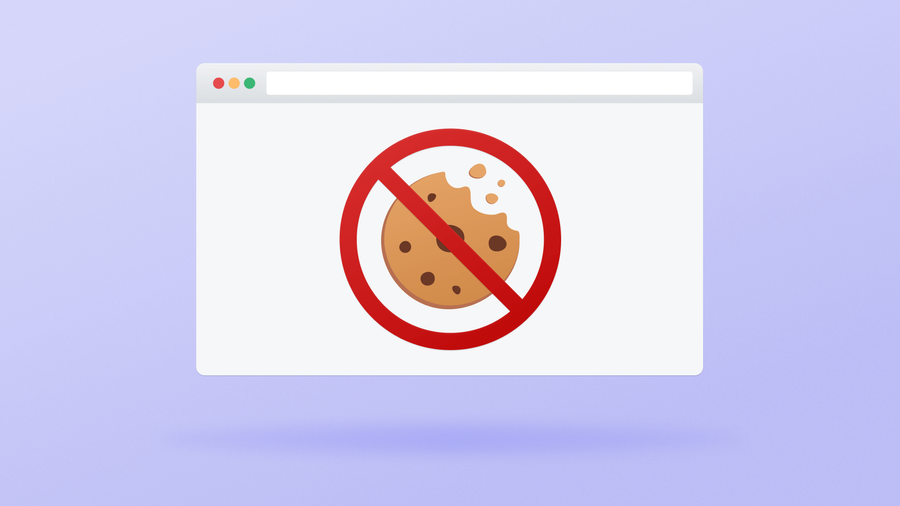Internet cookies have been a foundational tool in digital marketing, revolutionizing how businesses understand and engage with online audiences. But even the strongest foundations eventually need rebuilding. Initially heralded for their ability to track user behavior, personalize experiences, and measure ad effectiveness, cookies wore out their welcome as concerns over privacy and data protection began to take center stage in the 2010s.
With Apple announcing automatic third-party cookie blocking for Safari in 2020 and Google sharing plans to phase out third-party cookies for Chrome by the end of 2024, the turbulent waters of the data-sharing landscape appear to be returning to a calmer state.
Read our summary for additional background on Google’s third-party cookie ban to get caught up!
From a consumer standpoint (and really for anyone who is chronically online) this is a massive victory for user privacy, prioritizing convenience over what would essentially become corporate cyberstalking. However, digital marketers are now navigating an uncertain shift towards alternative data collection methods and a renewed emphasis on privacy-centric marketing strategies to maintain genuine engagement.
If that’s the way the cookie crumbles, then where do we go from here?
The Challenges of Cookie-less Marketing Moving Forward
Audience Targeting Limitations
Without third-party cookies, marketers will lose access to valuable audience targeting data, making it more challenging to deliver personalized and relevant content to mobile users. This limitation may result in less precise targeting, potentially leading to decreased engagement and conversion rates.
A mobile app that previously relied on third-party cookies to target ads based on users' browsing behavior, may now struggle to tailor promotions effectively, leading to ads for fitness apps being shown to users interested in cooking instead. As a result, user engagement becomes stagnant and conversion rates decline due to the lack of relevant messaging.
Attribution Complexity
Third-party cookies play a crucial role in attributing conversions and tracking the effectiveness of marketing campaigns across different touchpoints. Without this granular data, marketers may struggle to determine which channels or tactics are driving conversions, making it impossible to allocate resources effectively and optimize campaign performance. Additionally, the inability to accurately attribute conversions can lead to misinterpretation of campaign effectiveness, potentially resulting in misguided decisions and wasted ad spend.
Retargeting Effectiveness Reduction
Typically, re-engagement campaigns rely on tracking users' past interactions with your app to deliver targeted messages or incentives, such as abandoned cart reminders, special offers, or updates about new features. Third-party cookies have traditionally facilitated this tracking by providing insights into users' browsing history and behavior across different platforms and devices.
Without these insights, user re-engagement becomes significantly less effective. Mobile marketers may find it difficult to re-engage users who have previously interacted with their brand, resulting in lower conversion rates and a diminished ability to nurture leads through the sales funnel.
Data Privacy Compliance
With increasing scrutiny on data privacy and regulations such as the General Data Protection Regulation (GDPR) and the California Consumer Privacy Act (CCPA), mobile marketers must navigate compliance challenges without relying on third-party cookies for data collection. This includes obtaining explicit consent from users for data tracking and implementing alternative methods for data anonymization and protection.
Read more about both the GDPR and the CCPA to refresh your knowledge and ensure best practices with your users’ data!
So, what are our options moving forward? Let’s look at some of the ways you should be changing the way you engage your users without third-party cookies.
How to Engage Mobile Users in a Cookie-less World
In the absence of third-party cookies, first-party data is re-taking center stage. By leveraging first-party data, you can create more meaningful and personalized user experiences ultimately driving higher levels of engagement, loyalty, and retention.
As a refresher, first-party data involves collecting and leveraging data directly from your own mobile apps and websites, as opposed to third-party data which is collected from external sources or providers.
So in a world without third-party cookies, keep these things in mind when shifting your in-house data priorities to maintain user engagement.
1. Implement Registration and Login Systems
First, consider implementing in-app user registration and login systems. By encouraging account creations or logins to your mobile app, you provide an opportunity to collect valuable first-party data directly from users. Registrations should be incentivized with exclusive benefits for logged-in users to increase opt-in rates and gather information such as demographic details, preferences, and past purchase history.
This approach not only enriches your first-party data repository but also enables personalized experiences and targeted messaging based on individual user profiles. Moreover, having authenticated users allows for more accurate attribution, measurement, and optimization of marketing campaigns, leading to improved campaign ROI and performance insights.
2. Leverage In-App Analytics and Event Tracking
You can leverage in-app analytics and event-tracking tools to gather valuable behavioral data from user interactions within your mobile apps. By tracking key events, such as app opens, page views, feature interactions, and in-app purchases, you gain insights into user engagement patterns, preferences, and conversion behaviors. This granular behavioral data gives you a clearer picture of user intent, enabling more tailored messaging, promotions, and recommendations based on real-time user actions.
Additionally, by analyzing user journeys and identifying points of friction or drop-off, you are simultaneously optimizing the app experience to drive higher engagement and retention rates over time. Maintaining user retention is a marathon, not a sprint, and the starting line should always be your first-party data.
Looking for a deeper dive into using first-party data in user engagement strategy? Look no further!
3. Implement Consent-Based Data Collection Strategies
Stepping away from third-party cookies presents a perfect opportunity for you to prioritize transparency and user consent when collecting and utilizing first-party data, fostering trust with your users. By implementing clear and user-friendly consent mechanisms within your mobile app, you can obtain explicit permission from users to collect and utilize their data for personalized marketing purposes.
This includes providing users with clear information about data collection practices, purposes, and opt-out options, empowering users to make informed choices about their privacy preferences.
We highly suggest taking a look at adding a user preference center to give your users a greater sense of control over their privacy and protect your engagement rates.
By respecting user consent and preferences, you begin to build stronger relationships with your audience and mitigate the risk of regulatory scrutiny or backlash. The icing on the cake? Obtaining consent ensures that the data collected is of higher quality and relevance, leading to more effective targeting and engagement strategies overall.
Alright, you have your first-party data — where are the best places to use it? Capitalizing on mobile channels that do not rely on third-party cookies, such as push notifications and in-app messaging are fantastic places to get results fast.
4. Personalize Push Notification Campaigns
By leveraging user preferences, behaviors, and past interactions stored within your app, focus on tailoring your push notifications to deliver relevant and timely messages that resonate with individual user segments.
For example, a retail app could send personalized recommendations based on a user's browsing history or previous purchases. In a world without third-party cookies, this allows you to maintain engagement with your audience without relying on external tracking mechanisms. Personalized push notifications have proven to deliver higher open and engagement rates compared to generic messages, leading to increased user retention and lifetime value.
Notifications that use personalized content have a 344% higher engagement rate than notifications that don't.
5. Interactive In-App Messaging
In-app messaging allows you to communicate directly with users while they are actively engaged with your app, providing opportunities for real-time interactions and feedback collection. Leverage your first-party data to personalize in-app messages based on key user behavior and patterns.
For example, a mobile gaming app may send personalized messages congratulating users on reaching a new level or offer special in-game rewards for achieving specific milestones. This approach is beneficial because it enables you to deliver targeted and contextually relevant messages within a controlled environment. Your goal here is to foster deeper engagement and drive desired actions such as app usage, purchases, or social sharing. By focusing on in-app messaging, you can mitigate concerns around privacy and data protection, as the communication occurs within the confines of your own app ecosystem.
What about messaging channels beyond push and IAM? After all, using more than one messaging channel to engage users has been proven to increase average engagement by 35.8%. When it comes to relationship building Build strong relationships with your mobile audience there are a few more things you can do.
6. Invest in Email, Your Most Cost-Effective Engagement Channel
Email marketing is often overlooked in the broader mobile marketing strategy, yet it remains one of the most powerful and effective channels for engaging users. Despite the rise of mobile apps and social media, email continues to offer unparalleled reach, personalization capabilities, and ROI potential, especially when combined with your other mobile channels.
In a world without third-party cookies, email becomes even more critical as a direct communication channel with users, enabling you to maintain engagement and deliver personalized messaging based on first-party data collected from your mobile app. By creating actionable email user segments and crafting personalized campaigns you foster long-term user retention on a channel that has built trust over the last serval decades.
Apps that use email as part of their omnichannel engagement strategy report the highest install-to-purchase conversion rates.
7. Enhance Loyalty Programs with Personalized Rewards
Speaking of user retention, this is absolutely the right time to re-evaluate your current mobile loyalty programs. These programs must be personalized with rewards and incentives based on first-party data to drive engagement. For example, a travel app may offer personalized discounts or upgrades based on a user's travel history or destination preferences. This approach is beneficial because it encourages repeat purchases and fosters deeper engagement with your app, leading to maximized user lifetime value.
If there is one area to differentiate yourself from your competitors, it is with an irresistibly rewarding loyalty program focused on building stronger relationships with your audience and transforming them into vocal brand champions.
Making the Absolute Most of First-Party Data With OneSignal
As we prepare for yet another monumental shift in the way we engage our mobile users, having the right tools for the job becomes paramount. OneSignal’s robust data analytics suite combined with our unparalleled support for push notifications, IAM, SMS, email, and Live Activities means you don’t have to sacrifice user privacy to retain your audience.
Get Started for Free



